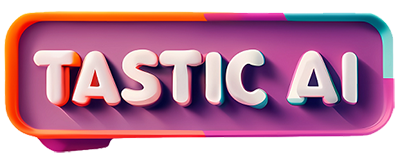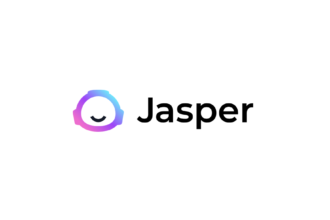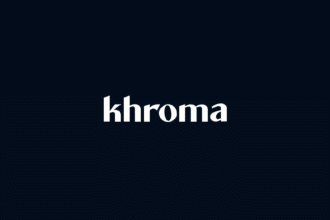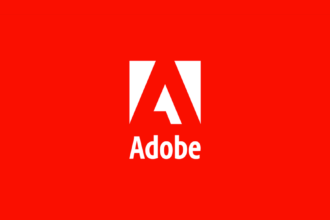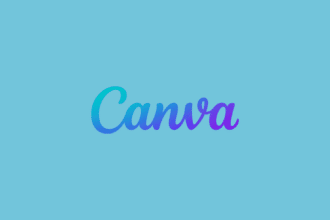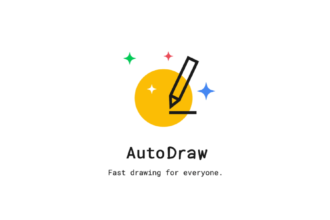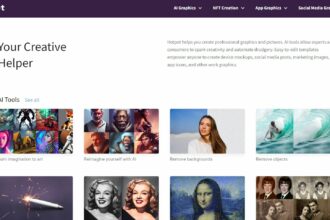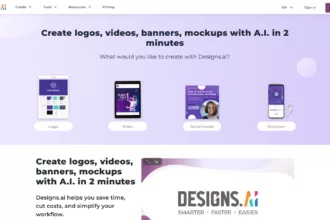TOP 8 AI design tools (November 2023)
As a creative professional in the digital age, your design toolkit is your best ally—and with AI design tools, it’s smarter and more powerful than ever. The best AI design tools offer a suite of features that are redefining the creative landscape, seamlessly blending technology with human ingenuity.
These AI tools, designed with the user in mind, offer more than just shortcuts—they are the companions that understand your creative language and help bring your vision to life with astonishing speed and precision. From crafting stunning visuals with generative art algorithms to refining user interfaces with predictive design elements, these AI assistants are reshaping what it means to be a designer.
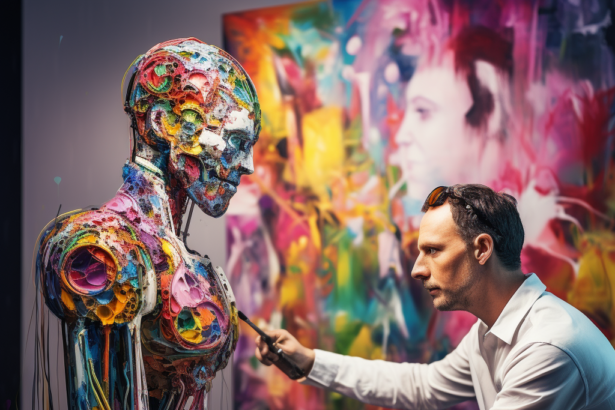
1 - Jasper Art
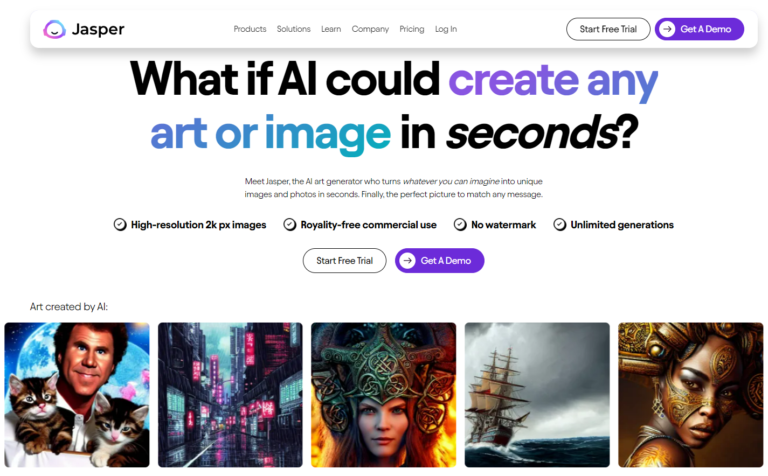
Jasper Art emerges as a standout contender in the AI design tool arena, a one-stop shop for generating images and artwork with the ease and agility demanded by today’s fast-paced creative industries.
With its user-friendly interface, Jasper Art democratizes design, allowing professionals and novices alike to turn a simple text description into a visual reality. The platform’s process is simplicity personified: input your vision, choose your style, and let the AI work its magic. Seconds later, you’re presented with a selection of images that translate your ideas into digital form.
What sets Jasper Art apart is not just its ease of use but the breadth of its features. Whether you’re looking to conjure up fantastical scenes for a novel or craft the perfect graphic for your next marketing campaign, Jasper’s versatility is its superpower. The images it produces aren’t just varied; they’re of a quality that rivals what you might expect from human hands, suitable for a wide array of professional applications.
Beyond the tech itself, Jasper Art nurtures a vibrant Facebook community—a hub of collaboration and peer-to-peer support that enhances the user experience. Complementing this community is Jasper’s customer support, providing a safety net for any queries or challenges you might encounter.
In terms of value, Jasper Art presents a compelling case. The investment translates into unlimited image generation potential, offering a cost-effective alternative to the traditional routes of image acquisition—be it self-creation or through professional services.
And while Jasper Art excels, it is not without its limitations. The tool offers less control over intricate design specifics, which can be a drawback for projects requiring meticulous customization. There’s also a watchful eye needed for copyright compliance in image descriptions, and like many cloud-based tools, offline access remains a bridge too far.
However, these are but minor caveats in an otherwise stellar tool. Jasper Art is an excellent choice for anyone seeking to streamline their design process, ensuring high-quality, original imagery that keeps pace with the demands of content creation. Whether you’re building a brand, enriching online content, or anything in between, Jasper Art stands ready to transform your creative workflow.
2 - Khroma
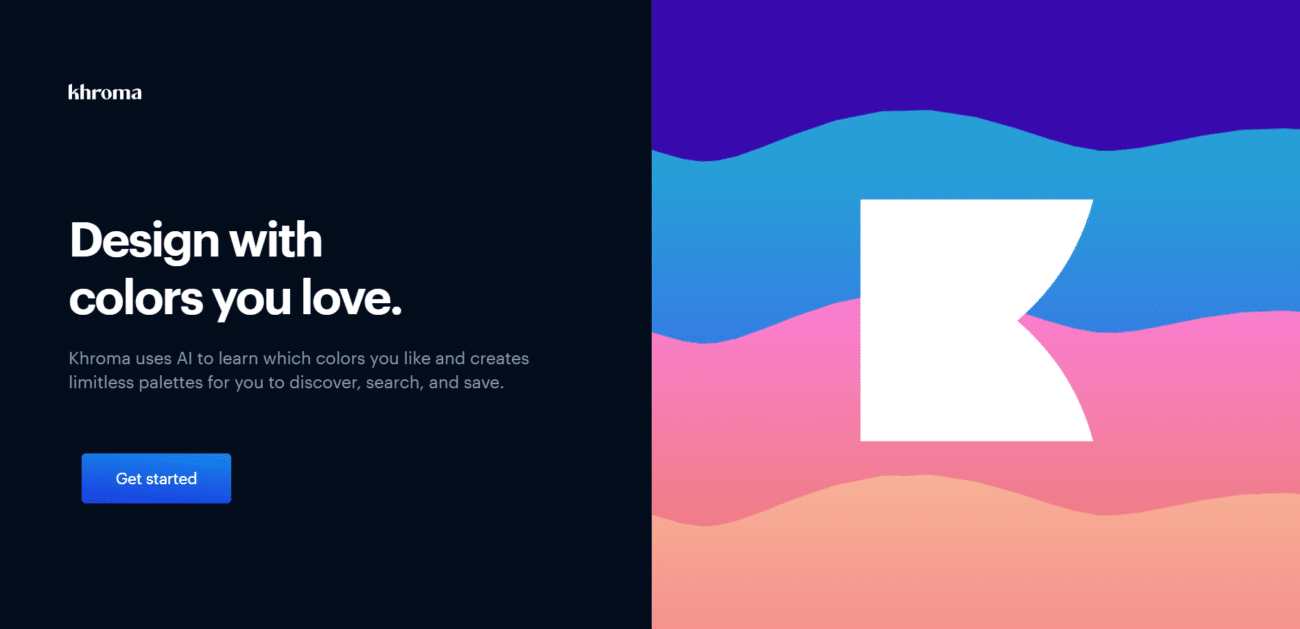
Khroma stands as a visionary AI color tool, specifically tailored for designers who seek both inspiration and precision in their color choices. Born from the ambition to transcend the offerings of its predecessor, Color Claim, Khroma weaves together a vast tapestry of colors, offering designers an unparalleled spectrum to choose from.
The brainchild of George Hastings, Khroma champions user engagement right from the start. By inviting users to select their top 50 colors, it crafts a personalized palette playground. This feature not only ensures relevance but also cultivates a sense of ownership over the creative process. Khroma’s database is not just expansive; it’s tailored to the individual designer’s aesthetic, ensuring that each palette is deeply personal and infinitely applicable.
The interface of Khroma is where it truly shines—intuitive and accessible, it promises a seamless experience even for those who are newly initiated into the world of color design. It’s a democratic tool, free at the point of use, which generates endless combinations that can be customized, saved, and revisited for future projects.
The versatility of Khroma is evident in the range of options it provides. Whether you’re tweaking gradients or overlaying palettes onto images, Khroma adapts to your project’s needs. The ability to search palettes by specific criteria such as hue or hex code is particularly beneficial for those seeking to maintain brand consistency or meet specific project requirements.
In the practical realms of UX and UI design, Khroma shows its mettle, streamlining the workflow from ideation to prototyping. It doesn’t just suggest colors; it integrates them into the design process, providing RGB values and CSS codes for a smooth transition from palette to prototype.
While Khroma is a stellar tool, the requirement to select 50 initial colors may be a daunting task for some, particularly those with time constraints or those still honing their color proficiency. Additionally, the sheer breadth of options could overwhelm beginners, and the lack of direct software integration may momentarily stall the creative flow.
Despite these few points of friction, Khroma stands as a remarkably cost-effective solution for designers looking to enhance their color selection process. It’s a tool that balances the generosity of choice with the guidance of AI, paving the way for designs that are as vividly unique as they are universally appealing. Whether you’re laying the first stone of a brand’s identity or putting the final touches on a digital interface, Khroma is the AI companion that speaks in the vibrant language of color.
3 - Adobe Firefly
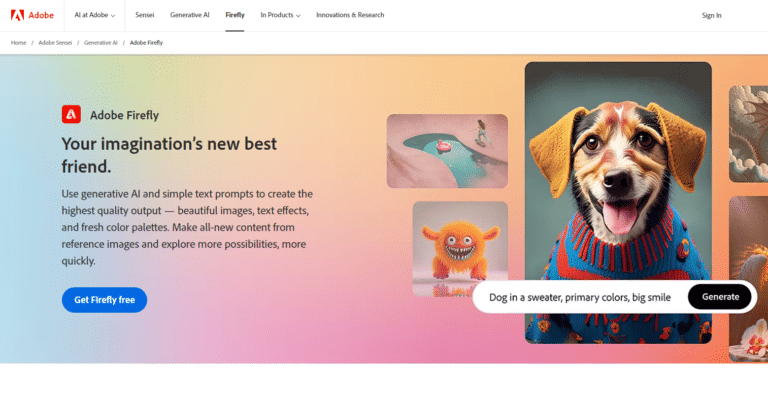
Adobe Firefly emerges as Adobe’s innovative foray into the generative AI space, specifically crafted for creatives who are both enthusiasts and professionals in the visual design industry. As a beta offering, Firefly encapsulates the potential of AI to augment the creative process, demonstrating Adobe’s commitment to pushing the boundaries of design technology.
At its core, Adobe Firefly is a generative AI tool designed to streamline and enhance the creation of graphics, imagery, and layouts. It caters to a user’s demand for quality and efficiency by employing sophisticated algorithms that learn and adapt from user input and patterns found in existing content. This learning capability signifies Adobe Firefly’s progressive nature, with an eye towards a future where AI tools not only perform tasks but evolve with their use.
Key features of Firefly include an array of generative capabilities across text, image, and layout design. With its user-friendly interface and a suite of customization tools, Firefly is engineered to serve a diverse set of industries, from graphic design and marketing to multimedia production. Adobe positions Firefly as a tool that can not only streamline workflows but also spawn new heights of creative expression.
The strengths of Adobe Firefly are manifold. It champions time-saving through automation, injects newfound creativity into design processes, and enhances output quality—all while being cost-effective. The platform’s user-centric design emphasizes an intuitive experience, ensuring that creators can leverage AI without steep learning curves.
However, as with any technology in its infancy, Adobe Firefly has its set of challenges. Its customization options, while extensive, are not boundless, and designers may find themselves wanting more control over the final output. Compatibility with other software is an area that might present hurdles, especially for a workflow that relies on a diverse set of tools. Moreover, Firefly’s reliance on consistent internet connectivity could be a stumbling block for users in regions with unstable internet.
The roadmap for Adobe Firefly appears promising, as Adobe continues to invest in and refine its generative AI technology. Future iterations are expected to expand its natural language processing abilities and develop tailored solutions across different creative sectors.
In summary, Adobe Firefly stands as a testament to Adobe’s pioneering spirit in the integration of AI within creative disciplines. While it navigates the complexities of beta development, its potential to revolutionize content creation is undeniable. With an eye towards a future rich in AI-assisted design, Adobe Firefly may well become an indispensable ally for creators looking to harness the power of AI in their work.
4 - Midjourney
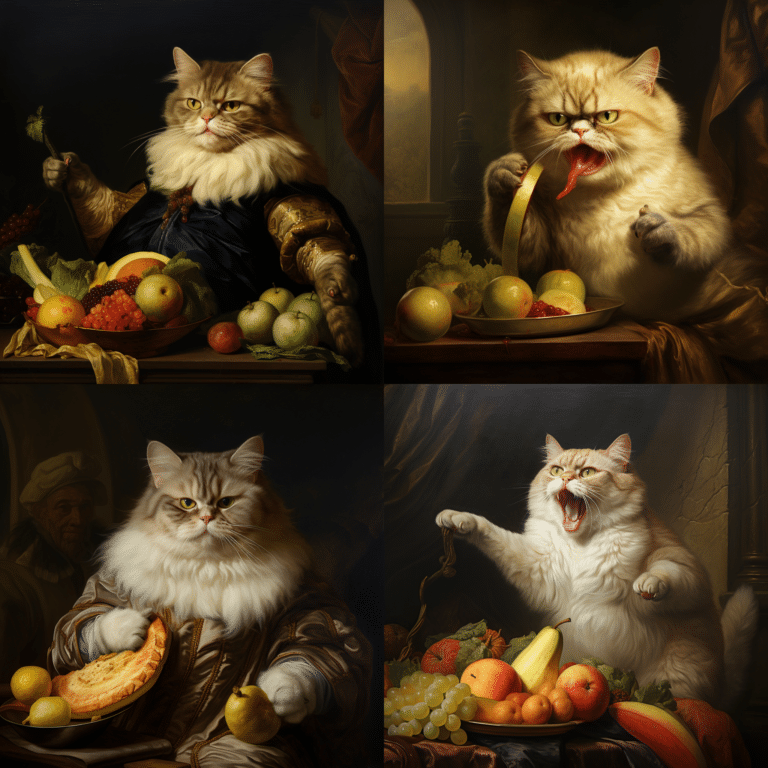
Midjourney provides a cutting-edge twist to the realm of AI-powered design tools, offering artists and creatives a new playground for visual exploration through its AI image generator hosted on Discord. It’s a platform that entices with its innovative image generation process, using descriptive prompts to conjure up vivid, high-quality images, serving a broad spectrum of creative needs.
Understanding Midjourney Midjourney differentiates itself by not merely piecing together existing images but by interpreting text prompts to deliver unique, often striking visual concepts. It goes beyond the norms of image compositing, inviting users to delve into uncharted creative territories. This AI operates through the social platform Discord, utilizing bots to interpret user prompts and deliver artistic outputs directly in the chat.
AI in Action The brainchild of David Holz, Midjourney is a constantly evolving service that’s not afraid to reinvent itself with each version. Version 5 is particularly noteworthy, with significant strides in image quality, stylistic range, and feature set, including improved texture handling and support for various aspect ratios.
Using Midjourney is as simple as joining a Discord server and summoning the bot with an “/imagine” command followed by a descriptive prompt. The resulting images are then reviewed by the user, who can iterate further to hone in on their vision. The process of crafting prompts is in itself an artistic endeavor, requiring nuance and specificity to yield the best results. Yet, the unpredictable nature of AI means the outcome might still surprise, for better or worse.
Pricing and Subscription
Midjourney doesn’t shy away from monetization, offering several subscription tiers post-trial, with a range from $10 to $60 monthly, each with varying GPU time allowances and access features. Though a free trial exists, it is somewhat limited, pushing users towards a paid commitment.
Advantages and Disadvantages
With Midjourney, users can revel in the production of exceptional images and enjoy the thrill of creative iteration. However, this comes with the cost of navigating the sometimes chaotic environment of Discord servers. Furthermore, the absence of a robust free trial and potential copyright complexities add a layer of consideration for prospective users.
Controversy and Considerations
Midjourney isn’t without its controversies, primarily centered around the originality and copyright of the AI-generated images. The public nature of creations on the platform also raises privacy concerns for those who prefer discretion.
Is Midjourney Worth the Investment?
Midjourney is a compelling tool for those interested in abstract, product, or simple stock imagery through AI, yet it isn’t a catch-all solution. While it pushes boundaries in image generation, it cannot fully replicate the nuances of human photographers and artists.
Final Thoughts
Midjourney stands as a beacon for AI-generated art, providing a sandbox for creativity with a few caveats around navigation and legal concerns. This review encapsulates Midjourney’s offerings, highlighting its potential for creative exploration and the consideration it demands for its full utilization in a professional creative arsenal.
In our ever-expanding article on the best AI design tools, Midjourney claims its rightful spot as a tool of intrigue and potential—a platform that simultaneously inspires with its capabilities and prompts cautious optimism for its future developments.
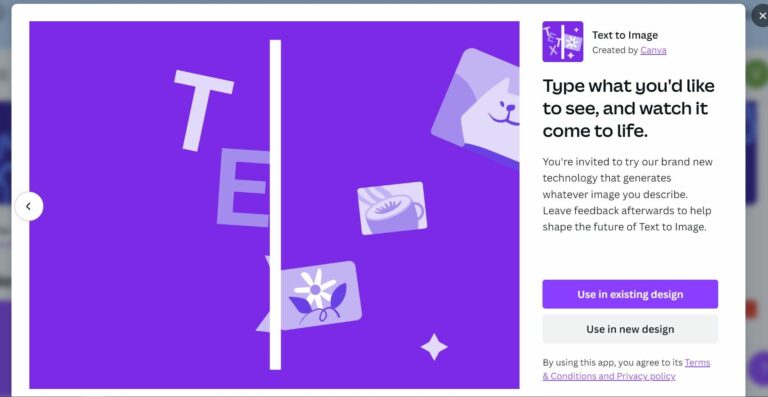
In the ever-evolving realm of AI design tools, Canva has introduced a game-changer: Canva Text to Image. It’s a remarkable feature that’s redefining how we create and visualize ideas. With a user-friendly interface and a plethora of styles at your fingertips, this tool is like your personal digital alchemist, adept at turning the leaden complexity of text descriptions into the gold of visual content.
User-Friendly Interface and Aesthetic Diversity
With Canva Text to Image, simplicity is king. You type in your idea, choose your style, and like magic, your vision takes form in a visual output that’s rich in detail and matched to your specified aspect ratio. The tool is a buffet of creative styles—whether you’re after the gritty realism of a professional photo or the whimsy of a 3D-rendered scene, Canva serves it up with a side of user-friendly elegance.
A Tool for Every Creative Appetite
The versatility of Canva Text to Image is where it shines brightest. From marketers to dreamers, it enables a quick transition from concept to creation, producing unique images that stand out in the saturated digital landscape. It’s not just a tool; it’s a creative partner that assists in bringing abstract ideas into the concrete world with speed and precision.
Understanding the Boundaries
As with all powerful tools, there are boundaries to be respected. The free version of Canva Text to Image offers a tantalizing taste with a limit of 50 creations, while subscription users will find themselves with a more generous, yet still capped, creative allowance. The necessity of precise keywords underscores the tool’s reliance on clear, concise input to deliver the best results.
Moreover, navigating the murky waters of copyright is essential. Canva’s stance is clear—they don’t own the images you create, but they do require you to play by the rules, both theirs and those established by copyright law. This consideration ensures that your creative process is not just boundless, but also responsible.
The Verdict: Canva Text to Image – Your Imaginative Co-conspirator
Embodying the enchantment of digital creation, Canva Text to Image invites you to bring forth visions with ease. It’s not just about creating images—it’s about conjuring up a visual language that communicates your unique perspective. Yes, there are limitations and ethical considerations to juggle, but the potential for creation is immense.
With its intuitive interface, customizable styles, and commitment to uniqueness and safe usage, Canva Text to Image earns its place as a top contender in the AI design tool arena. While the limitations for non-subscribers and the dependence on specific prompts might be drawbacks, the tool’s strengths in transforming verbal descriptions into striking images make it an asset for any creator aiming to make a visual impact.
Whether you’re looking to infuse your projects with a dose of originality or simply exploring the boundaries of AI-assisted design, Canva Text to Image is a resource worth weaving into your creative tapestry.
6 - Topaz Photo AI
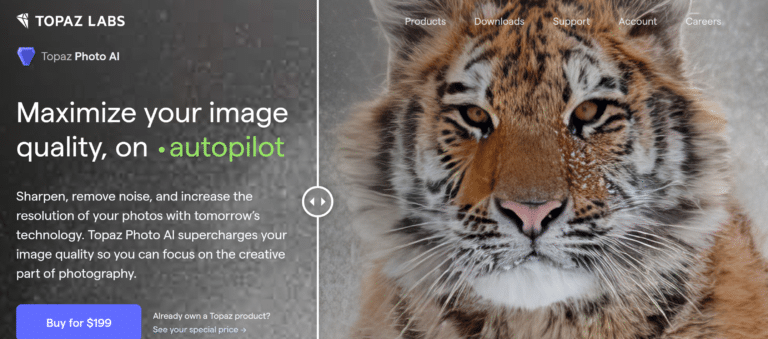
In the quest for pixel-perfect photography, Topaz Photo AI emerges as a dynamic choice for photographers and designers alike. It’s not attempting to oust giants like Adobe Lightroom from their thrones; instead, it carves out a niche in the image quality optimization kingdom. Combining the prowess of Topaz Labs’ DeNoise AI, Sharpen AI, and Gigapixel AI, this all-in-one solution is designed to elevate the details, textures, and clarity of your images.
The Harmony of Autopilot and Precision
Imagine a co-pilot that knows the skies of image enhancement like the back of its hand. That’s the autopilot feature in Topaz Photo AI. Upon importing your image, it deftly suggests settings that bring out the best in your photo. However, it’s not always telepathic regarding your immediate goals—it might get overzealous with upscaling when you’re just looking to hush the noise. A bit of manual steering can lead to perfection.
Scaling New Heights with Upscaling
Topaz Photo AI’s upscaling ability is a powerful ally, especially for images destined for print. It scales up images with an intelligent approach, keen on preserving quality. While the results are generally impressive, the process isn’t hasty. Upscaling is a marathon, not a sprint, and the software takes its sweet time ensuring each enlarged pixel is as good as the original.
A Duotone of Noise Reduction and Sharpening
The noise reduction tool is the heart of Topaz Photo AI, seamlessly reducing visual static without a whisper of a complaint. Its sharpening counterpart is equally adept, salvaging shots that might have been lost to soft focus or camera shake. They’re a dynamic duo when dealing with the unfiltered truth of raw files, although their full potential may not be utilized if one simply relies on autopilot.
Comparative Perspective: Does Topaz Photo AI Stand Alone?
Topaz Photo AI marries simplicity with sophistication. It may not offer the surgical precision of its standalone predecessors, but it compensates with convenience. For those who find juggling multiple tools cumbersome, this unification is a blessing, albeit with the occasional hiccup in speed, particularly when it gets bogged down with more complex, larger files.
Evaluating the Price of Perfection
At $199, Topaz Photo AI is a significant investment. Yet, it’s a package deal, bringing together features that would otherwise cost more separately. It’s user-friendly for those who appreciate straightforward solutions and consistent results without needing to dive into the deep end of editing. However, if your workflow demands lightning-fast processing or granular control, the investment may require second thoughts.
Closing Thoughts: Is Topaz Photo AI Your Next Editing Companion?
Topaz Photo AI stands as a testament to Topaz Labs’ commitment to quality and detail. The autopilot function is a nod to user-friendliness, while its upscaling, noise reduction, and sharpening tools are formidable. Yet, patience is a virtue when dealing with its pace, and for those who desire deep customization, the software may feel a tad restraining.
In summary, if your focus is on efficiency and quality, and the price tag doesn’t deter you, Topaz Photo AI could be a brilliant addition to your digital darkroom. It’s a robust multi-tool designed for the modern artisan who values time, quality, and simplicity in their artistic process.
7 - Designs.ai
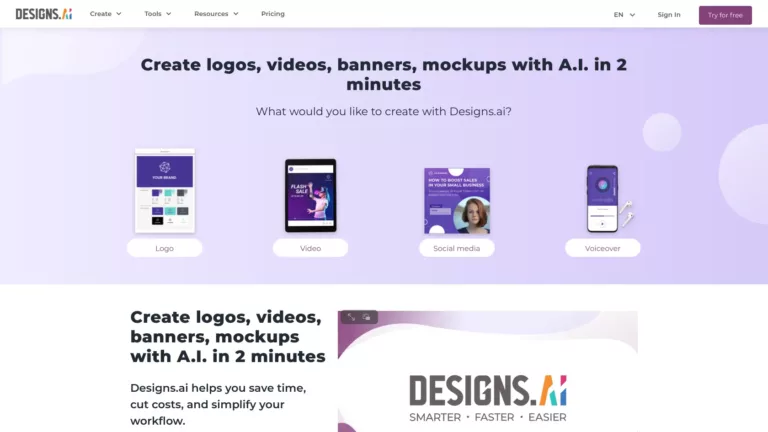
With an elegant royal purple interface, Designs AI is not just a feast for the eyes but a well of functionality for novices and seasoned professionals alike. The user-friendly dashboard and easily navigable tools invite users to unleash their creative vision without the steep learning curve typically associated with design software. While the platform sings on web browsers, it’s hard not to notice the void left by the absence of dedicated mobile and desktop apps, and the video maker may test your patience with its leisurely pace.
A Symphony of Tools at Your Fingertips
Designs AI doesn’t just add a sprinkle of AI; it integrates it deeply into each of its features. The AI Logo Maker is swift to offer a plethora of unique templates, laying the groundwork for personalized logos that resonate with your brand identity. The Video Maker is your visual storyteller, transforming text into compelling video content. The Speech Maker breathes life into text with a naturalistic timbre, and the Design Maker offers a vast trove of templates and images, challenging established rivals like Canva.
Freedom to Create and Commercialize
The platform is generous with its licensing, allowing you to use the fruits of your creativity however you see fit, commercially or otherwise. The basic plan’s pricing is on the friendly side, especially when considering the full spectrum of tools it unlocks, including a Brand Kit to maintain brand consistency—although it’s worth noting the current limitations like the inability to add custom logos.
Concluding the Designs AI Experience
Designs AI stands as an ambitious all-in-one suite that makes sophisticated design work accessible, not just to those with a design background, but to anyone with an idea and a drive to create. Its promise is vast, and while it excels in making AI design mainstream, there is room for refinement—perfecting the voice of AI and ironing out web interface wrinkles could enhance what is already a solid foundation.
The Designer’s Verdict
In conclusion, Designs AI is a vibrant, accessible, and cost-effective solution for digital design needs. It’s a window to an AI-assisted future, albeit one that might need to focus more on mastering individual elements to truly excel. Yet, even with its few shortcomings, the platform’s suite of tools, from Logo Maker to the soon-to-be-released Mockup Maker, makes it a worthy contender in the best AI design tools arena, promising a simpler, more intuitive design experience for creators everywhere.
8 - Autodraw
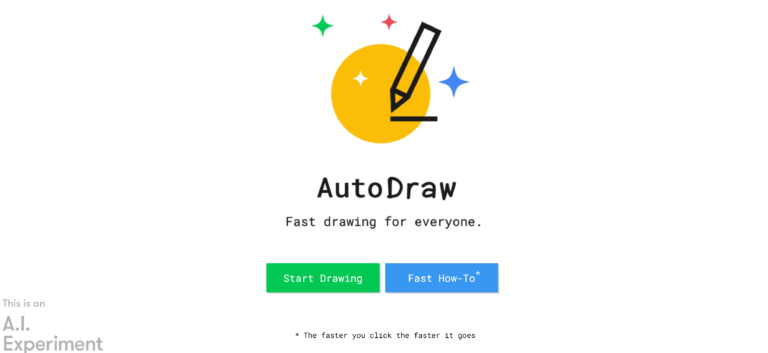
Autodraw emerges as a refreshing tool in the world of AI design, functioning not just as a drawing assistant, but as a catalyst for creativity. Designed to transform crude scribbles into refined artwork, this platform leverages machine learning to make artistic expression more accessible to everyone, regardless of their drawing skills.
A Blend of Simplicity and Machine Intelligence
At its core, Autodraw is delightfully straightforward yet ingeniously packed with AI. The platform is intuitive, turning the daunting canvas into a playground where every stroke is a step toward a masterpiece. This web-based tool stands out for its remarkable ability to convert freehand doodles into polished illustrations, courtesy of its vast database of drawings.
The Autodraw Experience: Creativity Unleashed
Autodraw’s charm lies in its simplicity and the magic of its AI suggestions. Whether you’re a professional artist or someone whose expertise ends at stick figures, this tool offers a level of confidence and convenience in drawing that is genuinely unprecedented. It ignites creativity, providing visual suggestions that can inspire and expand artistic horizons.
Streamlining Art, One Stroke at a Time
Accessibility is another of Autodraw’s strong suits. Requiring nothing more than an internet connection, it removes the barriers of expensive software and steep learning curves. This platform excels in its commitment to being user-friendly, making the art-creation process as smooth as a pencil gliding on paper.
Navigating the Quirks of Autodraw’s AI
No tool is without its flaws, and Autodraw is no exception. Its AI, while revolutionary, isn’t flawless and may occasionally miss the mark in interpreting user intentions. Additionally, while its content library is impressive, it isn’t exhaustive. There may be moments when users find the AI’s suggestions and the actual content library falling short of their vision. However, with constant improvements and updates, such hiccups are becoming less frequent.
Final Thoughts: Autodraw as a Digital Art Innovator
Autodraw stands not just as a tool, but as a digital companion for anyone looking to translate their vision onto a digital canvas. It fosters an environment where the barrier to entry for creating art is virtually nonexistent. As part of an article on the best AI design tools, Autodraw deserves recognition for its role in simplifying and democratizing the process of drawing with its accessible, creative, and ever-improving platform.
In Summary
While it’s clear that Autodraw still has room to grow, particularly in expanding its content library and refining its AI’s understanding of user inputs, the tool’s strengths make it a noteworthy and fun inclusion for those seeking to dabble in digital artistry without the usual constraints. As it stands, Autodraw represents the spirit of AI design tools well—embracing imperfection and evolution on the path to making art creation a more inclusive and joyful experience.
How to choose you AI design tools
Navigating the world of AI design tools can feel like walking through a labyrinth; every turn promises innovation but also presents a challenge in making the right choice. To help you find the perfect AI companion for your design needs, here’s a comprehensive guide focusing on the key features and aspects you should consider.
1. Intuitiveness and Learning Curve
The best AI design tools should feel like an extension of your creativity, not a barrier. Look for a platform with an intuitive user interface that you can navigate with ease. The learning curve shouldn’t be steep; you want to spend time creating, not just learning how to use the tool.
2. Feature Richness
A stellar AI design tool comes equipped with a suite of features that can handle a wide array of tasks. Consider the breadth of capabilities such as logo creation, banner design, mockups, and video production. An excellent tool should offer a variety of functions while ensuring that each is robust enough to meet your specific design needs.
3. AI-Powered Efficiency
AI should not only automate tasks but also enhance your design process. Check if the tool offers smart features like design suggestions, color palette generators, or layout recommendations that adapt to your preferences. The AI’s role is to expedite the design process while maintaining high quality in the final product.
4. Quality of Output
The endgame is the quality of design the tool helps you produce. Does the tool offer high-resolution outputs? Are the designs it proposes modern, professional, and in line with current trends? You’ll want a tool that consistently provides quality that you’d be proud to showcase.
5. Customization
Even with AI, design is a personal affair. The ability to customize the suggestions and templates provided by the AI is paramount. Ensure that the tool allows for adjustments and edits so that the final design truly reflects your vision.
6. Resources and Assets
A top-notch AI design tool should boast an extensive library of assets. From fonts to icons, from stock photos to video footage, the range and quality of in-built resources can significantly impact your design’s effectiveness.
7. Collaboration Features
Design is often a collaborative effort. If you work with a team, consider whether the tool allows for easy collaboration. Features such as real-time editing, feedback loops, and seamless sharing can enhance teamwork and improve the design process.
8. Compatibility and Integration
Your AI design tool should play well with other software and platforms you use. Check for compatibility with different file formats and whether it can integrate with other tools or systems in your workflow.
9. Scalability
Your design needs might grow, so it’s important that the tool is scalable. It should cater to the rising demands of your projects or business without requiring a complete switch to a new platform.
10. Support and Community
Even AI tools need human backup sometimes. Good customer support can be invaluable, as can an active community from which to seek tips and best practices. Look into the support system offered by the tool, including tutorials, forums, and customer service responsiveness.
11. Pricing Structure
Finally, consider the pricing structure of the AI design tool. It should align with your budget and the value it offers. Be wary of hidden costs and look for transparent pricing—whether it’s a subscription model or a one-time purchase.
In Conclusion
Finding the best AI design tool is about aligning its features with your creative vision, workflow, and demands. By scrutinizing these aspects, you can ensure that your chosen tool not only enhances your design capabilities but also brings joy and efficiency to the creative process. Remember, the best tool is one that fits seamlessly into your world, letting your ideas take flight with the power of AI by your side.
List of the top AI design tools (November 2024)
Jasper Art – All in one AI image & art generator
Jasper Art Review Overview Jasper Art is a revolutionary AI tool that…
Khroma – The AI color tool for designers
Overview of Khroma Khroma is an AI-powered tool that has revolutionized the…
Adobe Firefly – Generative AI made for creators.
Introduction to Adobe Firefly Recently, Adobe has introduced a new generative AI…
Midjourney – AI Image Generator on Discord
In this review, we will explore the details of Midjourney, thoroughly examining…
Canva Text to Image – AI-generated images from verbal descriptions.
Canva Text to Image is a tool that harnesses the power of…
Topaz Photo AI – Supercharge your image quality – remove noise, and increase resolution.
Introduction to Topaz Photo AI Respected software developer Topaz Labs has earned…
Autodraw – Draw fast with artificial intelligence
AutoDraw is an online sketching tool that combines the power of machine…
Hotpot.ai – Create pro graphics for device mockups, social media, marketing, & more.
What Hotpot.ai Offers Hotpot.ai is a remarkable Artificial Intelligence (AI)-driven image generator…
Designs AI – Design with A.I. in 2 mins: logos, videos, banners, mockups.
Designs AI is a potent, all-in-one AI-powered design tool, efficiently catering to…

